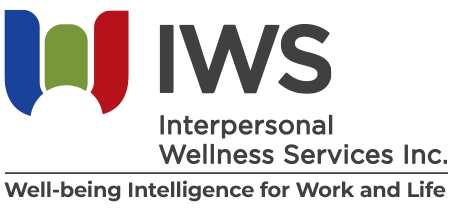Team development is a critical aspect of achieving organizational success. Understanding the stages a team goes through can help leaders foster effective collaboration at every step. It will also help promote interpersonal well-being and psychological safety at work.
Dr. Bruce Tuckman, a psychologist, proposed a model in 1965 that outlines the stages of team development: forming, storming, norming, performing, and adjourning. Each stage presents unique challenges and opportunities for building collaboration. Let's explore these stages and how to enhance collaboration in each.
1. Forming Stage: Laying the Foundation
Characteristics:
- Team members get acquainted with each other
- Roles and responsibilities are unclear.
- Politeness and uncertainty dominate interactions.
- Team members are focused on understanding their place within the team.
Building Collaboration:
- Clarify Goals and Objectives: Communicate the team’s goals, objectives, and expected outcomes. This provides a shared purpose and direction.
- Define Roles and Responsibilities: Ensure each team member understands their role and how they contribute to the team’s success.
- Encourage Open Communication: Create an environment where team members feel comfortable sharing their thoughts and asking questions. Use icebreaker activities to build rapport.
- Set Ground Rules: Establish clear communication, decision-making, and conflict resolution guidelines to create a structured and respectful environment.

2. Storming Stage: Navigating Conflict and Competition
Characteristics:
- Team members start to express differing opinions.
- Conflicts and power struggles may arise.
- Team members test boundaries and challenge authority.
- Stress and anxiety levels can be high.
Building Collaboration:
- Facilitate Open Discussions: Encourage team members to voice their opinions and concerns. Listen actively and validate their perspectives.
- Mediate Conflicts: Address conflicts promptly and fairly. Use conflict resolution techniques to find common ground and compromise.
- Promote Empathy and Understanding: Encourage team members to see things from others' perspectives. Foster a culture of respect and empathy.
- Reinforce Team Goals: Remind the team of their shared objectives and the importance of working together to achieve them.

3. Norming Stage: Establishing Cohesion and Trust
Characteristics:
- Team members begin to resolve their differences.
- Norms and expectations are established.
- Collaboration and cohesion improve.
- Trust and camaraderie develop among team members.
Building Collaboration:
- Strengthen Relationships: Organize team-building activities that promote trust and camaraderie. Encourage social interactions outside of work.
- Celebrate Achievements: Recognize and celebrate the team’s accomplishments, both big and small, to boost morale and reinforce positive behaviour.
- Foster Mutual Support: Encourage team members to support and assist each other. Highlight the importance of teamwork over individual achievement.
- Regular Feedback: Provide regular constructive feedback to help team members grow and improve. Encourage peer feedback to build a culture of continuous improvement.

4. Performing Stage: Achieving High Performance
Characteristics:
- Team members are highly motivated and work effectively together.
- Roles and responsibilities are well-understood and accepted.
- The team consistently meets or exceeds goals.
- High levels of trust, autonomy, and collaboration.
Building Collaboration:
- Empower Team Members: Give team members the autonomy to make decisions and take ownership of their tasks. Trust their judgment and expertise.
- Encourage Innovation: Foster a culture of innovation and creativity. Encourage team members to share new ideas and take calculated risks.
- Maintain Open Communication: Keep communication channels open and transparent. Hold regular meetings to discuss progress, challenges, and opportunities.
- Sustain Motivation: Continue to motivate the team through recognition, rewards, and opportunities for professional growth. Ensure that the work remains challenging and engaging.

5. Adjourning Stage: Reflecting and Celebrating
Characteristics:
- The team’s project or task comes to an end.
- Team members may experience feelings of accomplishment or sadness.
- The team disbands or moves on to new projects.
- Reflection on the team’s journey and achievements.
Building Collaboration:
- Reflect on the Journey: Hold a final meeting to reflect on the team’s accomplishments, challenges, and growth. Discuss what went well and what could be improved in future projects.
- Celebrate Success: Celebrate the team’s achievements with a closing event or recognition ceremony. Acknowledge individual contributions and collective success.
- Provide Closure: Ensure that team members have a sense of closure. Address any unresolved issues and provide support as they transition to new roles or projects.
- Encourage Continued Connections: Foster ongoing relationships and networks among team members. Encourage them to stay connected and support each other in future endeavours.

Understanding the stages of team development is crucial for fostering collaboration and achieving success, especially when well-being and psychological safety is a priority for your organization. Leaders can build strong, cohesive teams that work together effectively by implementing strategies tailored to each stage in the forming, storming, norming, performing, and adjourning.
Each stage presents opportunities to strengthen collaboration, build trust, and drive the team towards its goals. Embracing these stages with the right approach can transform a group of individuals into a high-performing team capable of achieving remarkable results. We offer a range of team collaboration training and coaching to help maintain well-being and foster resilient relationships among teams.
Questions to Ponder:
- Is it time to revisit your team collaboration?
- Do you have new members in your team with diverse perspectives?
Action Steps:
- Book a team collaboration check-up with one of our coaches
- Take our team collaboration course here
To Your Wellness,
Joyce

